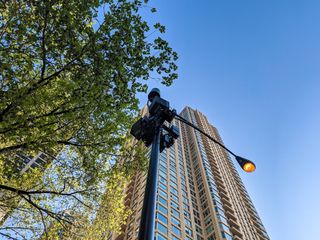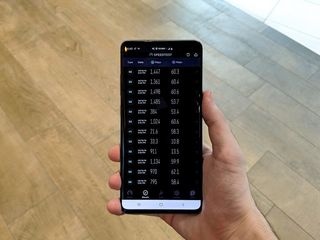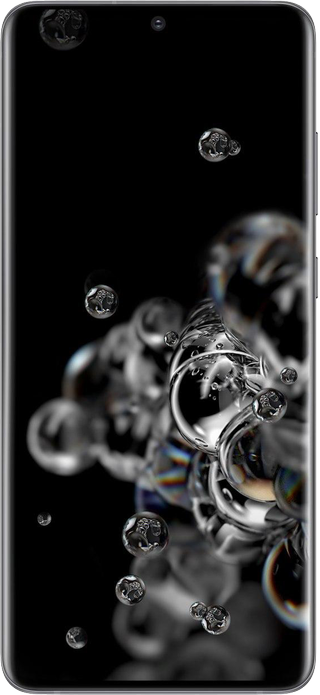Is 5G dangerous or is it safe?

Best answer: There is no evidence of risk to your health from mmWave 5G and Sub-6 5G since they use the same frequencies that have been in use for years. Certain 28 GHz bands could lead to weather information disruption if the power levels are too high.
- The first 5G-only Galaxy phone: Samsung Galaxy S20 Ultra 5G ($1400 at Samsung)
- Affordable 5G on Verizon: Moto Z4 ($400 at Amazon)
Is 5G different from 4G?
5G and 4G are mostly similar from a radio frequency and radiation perspective. Some 5G deployments like T-Mobile's 600 MHz 5G and Sprint's 2.5 GHz 5G use frequencies that have already been in use with 4G at similar power levels. If you remember UHF television, T-Mobile's 5G occupies the space that used to be channels 35 through 51. These frequencies are nothing new.
What is new is millimeter wave 5G, which includes mmWave and Ultra Wideband 5G.
The main difference is that mmWave uses very high frequencies to transmit more data. A side effect of this high frequency is that the signal doesn't travel as far as the lower frequencies. That's why mmWave 5G requires many more cell sites. While this may seem like you're getting doused in a greater amount of radiation, the signal degradation makes the radiation levels nothing new.
Don't panic about radiation

According to The International Agency for Research on Cancer (IARC), radiofrequency fields are listed as possibly carcinogenic to humans. As Digital Trends pointed out in its article, this is the same classification given to coffee.
Be an expert in 5 minutes
Get the latest news from Android Central, your trusted companion in the world of Android
In the same article, the FDA is quoted saying that it "continues to believe that the current safety limits for cell phone radiofrequency energy exposure remain acceptable for protecting the public health." For now, there appears to be no risk to health from the radio waves produced by phones and towers. At least no more than already existed.
As pointed out in a BBC News article, the power levels 5G is broadcasted at means it is non-ionizing. This just means that the signal doesn't have the strength to break down cells or DNA.
Predicting the weather

The high-frequency 24GHz bands that some upcoming fast 5G will use to produce top speeds are quite close to the 23.8GHz area that meteorologists use to measure water in the atmosphere. This is because tower equipment may not be precise enough to not interfere on the lower bands when power is pushed higher than -20 decibel watts per 200 megahertz. When amplified to these power levels for maximum coverage, the signal can become noisier and get in the way more.
With a little imagination, it's easy to see the kind of problems that can come from not being able to accurately measure the weather. As predictions suffer, people in severe weather conditions may not have the best information to make a decision. Staffing for crews that respond to weather conditions on roadways may not have the resources in place as quickly with a less accurate prediction.
As noted in an article by ScienceMag FCC Chairman Ajit Pai claims that with beamforming as well as millimeter-wave deployments being more isolated to dense areas, there won't be an issue.
Only time will tell the exact impact of the interference, but the major impact on mobile users might be a reduction in signal strength in the faster, high-frequency bands. Hopefully, carriers will work to make sure their equipment does as little damage to measurements as possible.
Conspiracy theories
There's been no shortage of wild theories regarding the purported dangers of 5G, which far too often get amplified by users with large audiences on social media. Many of these posts are presented without any verifiable sources, and make bold claims that 5G has lead to widespread sudden deaths or even that it caused the ongoing COVID-19 pandemic.
With a small bit of research, these conspiracy theories are easily debunked. Once again, most of the radio frequencies used for 5G have been in place for years, and the higher frequencies used for millimeter wave 5G non-ionizing. There are simply no signs pointing to 5G being any more dangerous than the LTE networks preceding it. The best thing you can do to prevent the spread of misinformation is to share scientifically backed, well-researched articles and sources demystifying the technologies behind 5G.

Fast, smooth, and cutting edge
The Galaxy S20 Ultra has a massive screen, a powerful Snapdragon 865 processor, a 108MP camera, and 5G support on virtually every U.S. carrier. It doesn't get much better.

The cheapest 5G phone on the market
The Moto Z4 is a decent phone on its own, but with the addition of the 5G Moto Mod, it becomes the cheapest way to gain access to Verizon's mmWave network.
When Samuel is not writing about networking or 5G at Android Central, he spends most of his time researching computer components and obsessing over what CPU goes into the ultimate Windows 98 computer. It's the Pentium 3.

